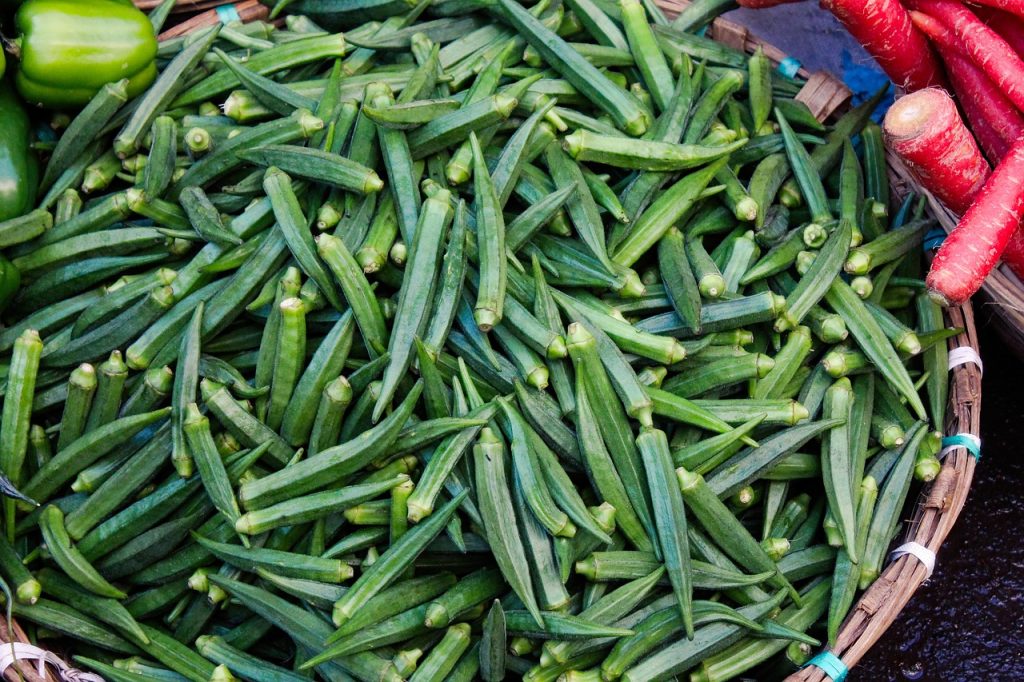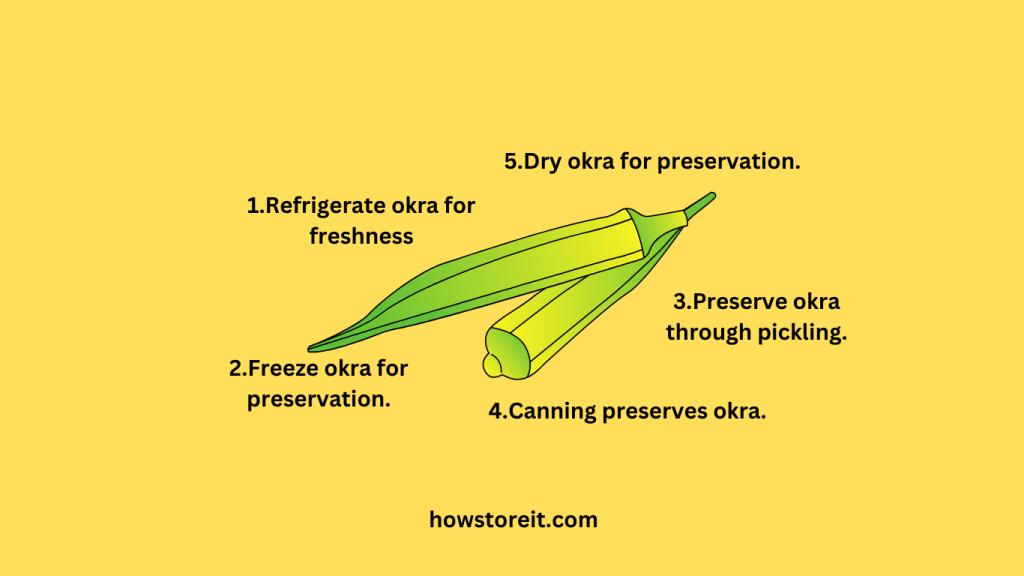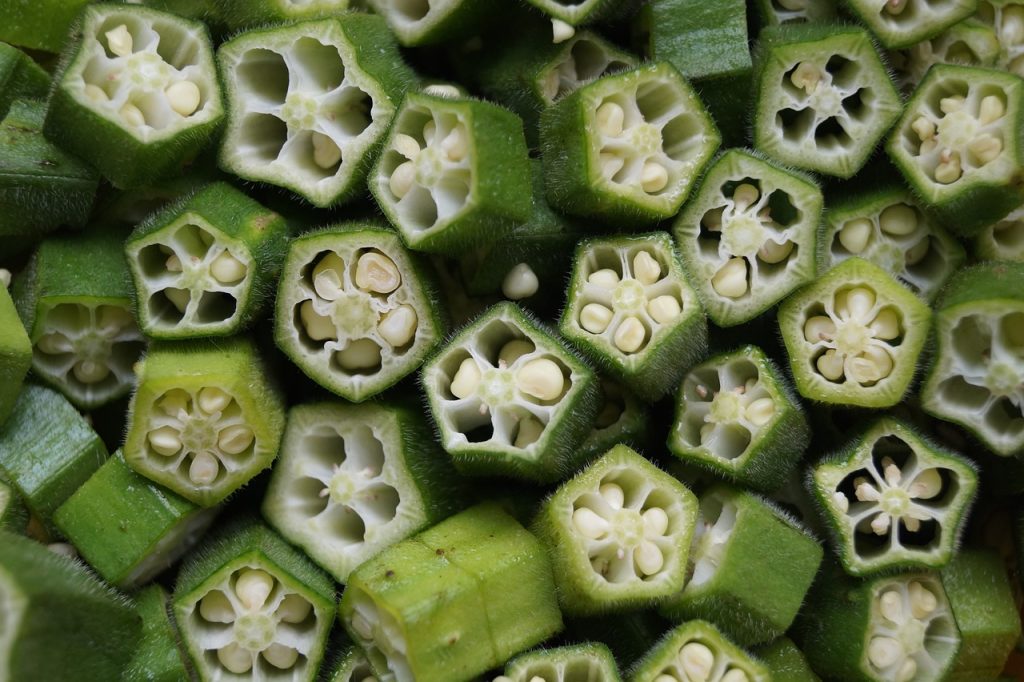
Okra is a popular vegetable that is rich in nutrients, including fiber, vitamin C, and antioxidants. It has a unique flavor and texture that make it a favorite ingredient in many dishes, such as gumbo, stew, and curry. However, if you don’t store fresh okra properly, it can quickly become limp, slimy, and lose its taste. In this article, we will explore five ways to store fresh okra so that it stays fresh and flavorful.
Factors That Affect the Shelf Life of Fresh Okra

The shelf life of okra can vary depending on several factors.
Temperature
Temperature is one of the most critical factors that affect the shelf life of fresh okra. Like most vegetables, okra is sensitive to temperature changes. The ideal temperature range for storing fresh okra is between 40-45°F (4-7°C). At this temperature, okra can last for up to 2-3 days in the refrigerator. If the temperature is too high, the okra will ripen too quickly and become slimy and soft.
Humidity
Humidity is another important factor that affects the shelf life of fresh okra. Okra is a sensitive vegetable that can quickly become slimy and mushy in high humidity conditions. Therefore, it is essential to keep okra dry to extend its shelf life. You can do this by storing okra in a perforated plastic bag or a paper bag that allows for some airflow.
Ripeness
The ripeness of okra also affects its shelf life. Okra that is too mature or overripe will not last as long as fresh okra. When buying fresh okra, look for pods that are bright green, firm, and tender. Avoid pods that are brown, discolored, or mushy.
Bruising and Damage
Okra is a delicate vegetable that can be easily damaged if not handled properly. Bruising and damage can occur during transportation, handling, or storage, leading to a shorter shelf life. To prevent bruising and damage, handle okra with care, and avoid stacking or overcrowding it.
Microbial Growth
Microbial growth is a natural process that occurs in all fresh produce, including okra. Bacteria and other microorganisms can grow on the surface of okra, leading to spoilage. To prevent microbial growth, it is important to keep okra clean and dry and store it in a cool and dry place.
By understanding these factors and taking proper precautions, you can extend the shelf life of fresh okra and enjoy its delicious flavor and nutrition for longer.
How to Store Fresh Okra

In the refrigerator
One of the easiest ways to store fresh okra is to keep it in the refrigerator. Start by washing and drying the okra thoroughly, then store it in a perforated plastic bag or a paper bag to prevent moisture buildup. Make sure to place the bag in the crisper drawer of your refrigerator, where the temperature is between 40-45°F (4-7°C). This temperature range helps to slow down the ripening process, which keeps the okra fresh for up to 2-3 days.
In the freezer
Another way to store fresh okra for a longer period is to freeze it. Begin by blanching the okra in boiling water for 3-4 minutes, then plunge it into ice water to stop the cooking process. Pat the okra dry and place it in a resealable plastic bag or an airtight container. Be sure to label the container with the date and freeze it for up to 8 months. Frozen okra is an excellent option if you want to have fresh okra all year round.
Pickled
Pickling is a great way to preserve fresh okra and add some tangy flavor. You can make your pickling solution using vinegar, salt, sugar, and your choice of spices, or use a store-bought pickling solution. Start by washing and trimming the okra, then pack it into sterilized jars. Pour the pickling solution over the okra, leaving about half an inch of headspace. Seal the jars and store them in the refrigerator for up to 2 weeks. Pickled okra is a delicious snack or a fantastic addition to salads and sandwiches.
Dried
If you want to store fresh okra for a more extended period, drying it is an excellent option. Begin by washing and drying the okra thoroughly, then slice it into thin rounds. Spread the okra out in a single layer on a baking sheet and dry it in an oven set to the lowest possible temperature or use a food dehydrator. Once the okra is completely dry and crisp, store it in an airtight container in a cool and dry place for up to 6 months. Dried okra makes a tasty snack or a flavorful addition to soups and stews.
Canned
Canning fresh okra is an excellent way to preserve it for a long time. Begin by washing and trimming the okra, then pack it into sterilized jars. Cover the okra with boiling water, leaving 1 inch of headspace. Seal the jars and process them in a pressure canner according to the manufacturer’s instructions. Once the canning process is complete, store the jars at room temperature for up to a year. Canned okra is an excellent ingredient for many recipes, such as pickled okra and okra soup.
How to Tell If Fresh Okra Has Gone Bad

Okra has a limited shelf life, and it can go bad if it is not stored properly.
Appearance
The appearance of fresh okra is the first indicator of whether it has gone bad or not. Fresh okra should have a bright green color and be firm to the touch. If the okra is discolored, brown, or yellow, or if it is soft or mushy to the touch, it has gone bad.
Smell
The smell of fresh okra can also be an indicator of whether it has gone bad. Fresh okra should have a fresh, grassy smell. If the okra smells sour or pungent, it has gone bad.
Texture
The texture of fresh okra is another indicator of whether it has gone bad. Fresh okra should be firm and tender, with no sliminess or mushiness. If the okra feels slimy or mushy, it has gone bad.
Mold
Mold growth is a clear indication that fresh okra has gone bad. If you see any mold growing on the surface of the okra, it is no longer safe to eat.
Taste
Finally, the taste of fresh okra can also be an indicator of whether it has gone bad. If the okra tastes sour or bitter, it has gone bad and should not be consumed.
To ensure that your okra stays fresh for as long as possible, store it in a cool, dry place and check it regularly for signs of spoilage. If you notice any of the above indicators, it is best to throw the okra away and not risk consuming it.


